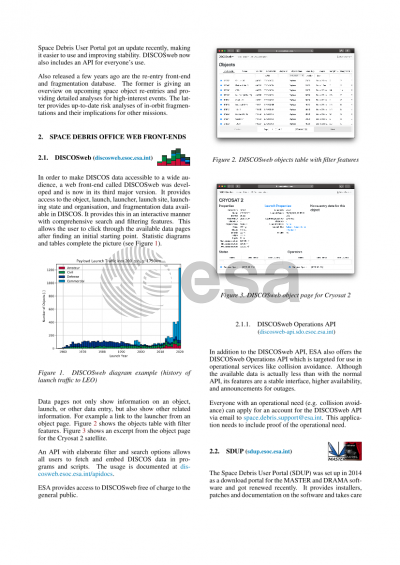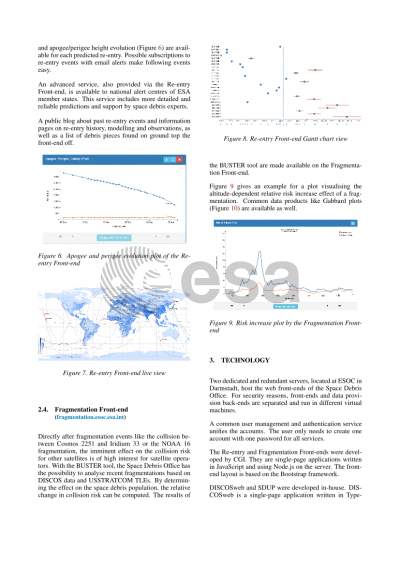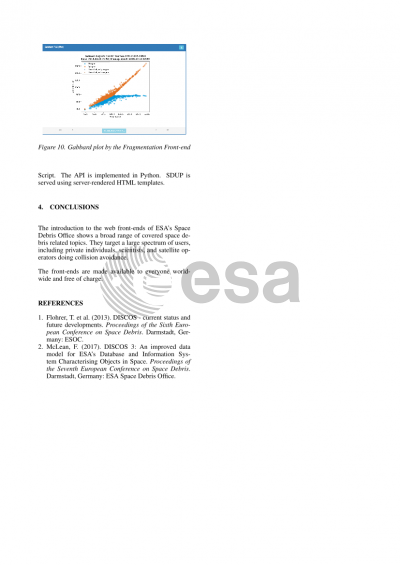Document details

Abstract
With DISCOS (Database and Information System Characterising Objects in Space) ESA’s Space Debris Office has a very powerful database in hands for space debris related analyses. It serves as a reference for launch information, object registration details, launch vehicle descriptions, spacecraft information (e.g. size, mass, shape, mission objectives, owner), and orbital data histories for all tracked objects, which sum up to more than 40000 object entries.
Using DISCOS object data and space surveillance data, the Space Debris Office routinely predicts upcoming re-entries, performs detailed analyses on high interest re-entries, and ad-hoc risk assessments to missions after severe fragmentation events. To support these processes, the Space Debris Office also maintains a solar activity prediction service , based on publicly available solar activity data, SOLMAG.
It is the Space Debris Office’s goal to make these predictions, analyses, and the DISCOS database available to a broad user spectrum, as it is of high interest to the whole space flight community within Europe and the rest of the world. Supporting Space Debris related studies and operational collision avoidance is the main target, but its usage is not limited to it. Web based technologies, to provide access to the space flight community, are the natural choice in light of current technology standards. A whole family of web services is hosted and maintained by the Space Debris Office, with the focus set on intuitive use, function, security, and harmonised look-and-feel.
Recent developments include a rework of DISCOSweb (https://discosweb.esoc.esa.int) visualising part of the DISCOS data in a human-readable form, but also including a comprehensive application programming interface (API) now. The existing API for operational use is still available as well. The Space Debris User Portal (https://sdup.esoc.esa.int), serving as distribution point for ESA’s risk and mitigation analysis tools MASTER (Meteoroid and Space Debris Terrestrial Environment Reference), DRAMA (Debris Risk Assessment and Mitigation Analysis), and Oriundo (risk assessment for uncontrolled re-entries), got an update as well. A new addition to the family is ESTIMATE (https://estimate.sdo.esoc.esa.int), a database on material demisability.
Already available for a few years but still actively maintained are the re-entry prediction frontend (https://reentry.esoc.esa.int), giving an overview on upcoming space object re-entries and providing detailed analyses for high-interest events, and the fragmentation event database (https://fragmentation.esoc.esa.int), providing up-to-date risk analyses of in-orbit fragmentations and their implications for other missions. These are complemented by web pages of more static nature, like the SOLMAG solar activity predictions.
All frontends share the same account system now, making them much easier to use. As the widely supported authentication standard OpenID Connect/OAuth 2 is used, it also facilitates the development of external software making use of DISCOS data via the new DISCOSweb API.
This paper will introduce all available web based tools and outline their function, focusing on the recent developments and the technology behind.
Preview






